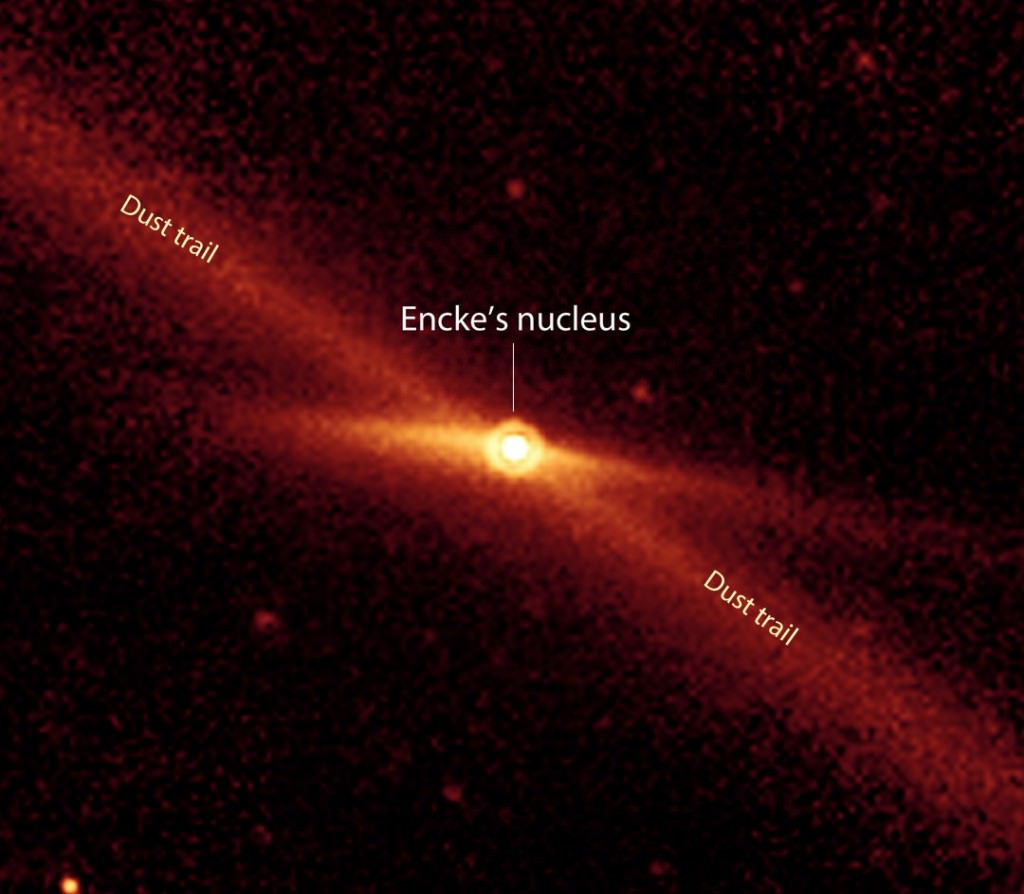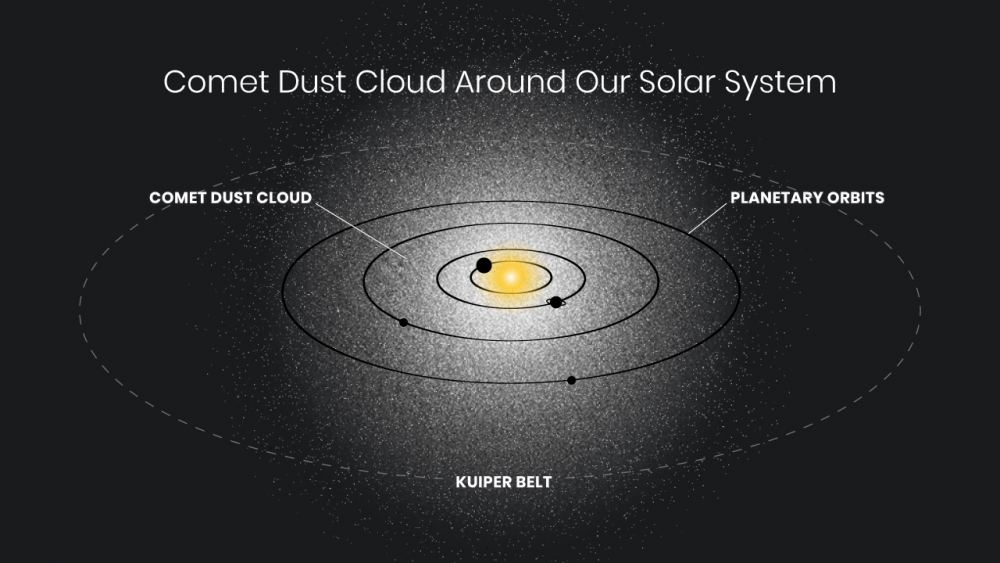Comets are messy things. They scatter bits of dust as they travel through the solar system. If Earth happens to encounter one of those cometary dust trails, we get to see a meteor shower.
Over the years, Hubble Space Telescope (HST) images have captured “leftover light” that couldn’t be traced back to glows from planets, stars, galaxies, or dust in the actual plane of our solar system. Could that dim glow come from a shell of comet dust? That’s what a team of astronomers wants to know.

Astronomer and Hubble veteran Rogier Windhorst of Arizona State University got the idea to go looking for the “ghost light” from comet dust in archival HST images. He led a team of graduate and undergraduate students in a project called SKYSURF to trace the ghost light.
“More than 95% of the photons in the images from Hubble’s archive come from distances less than 3 billion miles from Earth. Since Hubble’s very early days, most Hubble users have discarded these sky-photons, as they are interested in the faint discrete objects in Hubble’s images such as stars and galaxies,” said Windhorst. “But these sky-photons contain important information which can be extracted thanks to Hubble’s unique ability to measure faint brightness levels to high precision over its three decades of lifetime.”
Project SKYSURF: HST as Photometer
After 32 years of observations, HST has provided amazing views of the universe. That lengthy service actually counts for something in this case. SKYSURF basically uses the telescope as an absolute photometer. The project’s analysis takes advantage of decades of data to measure the all-sky surface brightness at 0.2-1.7 microns in 249,861 images. These come from Wide Field Planetary Camera 2, Advanced Camera for Surveys, and Wide Field Camera 3 exposures. The team devised a set of analysis and reprocessing practices in order to sift out the very faint light reflected from comet dust. The idea was to tease out the ghostly light from a possible comet shell from other background sources.
To do that, they took into account other background sources of light and were able to “subtract out” the general surface brightness (SB) of the sky. To do that, the team compared HST sky-SB measurements with predictions describing zodiacal light and galactic foregrounds. (The zodiacal light is a well-known glow of diffuse sunlight. It scatters off interplanetary dust in the plane of the solar system. You can see it by naked eye as well as through ground-based telescopes on very dark nights.) By contrast, the diffuse glow that Windhorst and his colleagues found in HST data is not limited to the solar system’s plane. Their analysis is letting them understand this diffuse light component in the HST data and lets them put some limits on its origin (either from inside the solar system or at cosmological distances).
Ghostly Emanations of Solar System Light?
When you look up into the night sky from a dark observing site, it looks dark. But, once you take into account all the other stuff up there that emits or reflects light, there’s still the ghostly glow that motivated Windhorst and his team to find an explanation. They sorted through 200,000 HST images and excluded all the obvious sources. What they were left with was a very small light excess. It’s very dim, but it’s there. And, HST isn’t the only detector to “see” it. The New Horizons spacecraft measured the sky background as part of its mission, from a distance between six to eight billion kilometers from the Sun. Interestingly, it detected something faint and far away, which astronomers are still working to figure out.
The researchers say that one possible explanation for this residual glow is a tenuous sphere of dust that’s reflecting sunlight. They think the dust comes from comets that are falling into the solar system from all directions. If they confirm that this dust shell is real, it will join the inventory of the solar system architecture.
At this point, there’s no hard confirmation that a comet-dust-created dust shell is the origin of the light. It could be from extragalactic background sources (possibly very faint galaxies). Or it might be from something called extragalactic background light (EBL) not assigned to any particular source. It’s the accumulated light from a variety of sources (including but not limited to star formation). To get a full idea of the extent of this light and its source, the teams continue to survey the entire HST archive.
For More Information
Hubble Detects Ghostly Glow Surrounding Our Solar System
https://hubblesite.org/contents/news-releases/2022/news-2022-050


It is a very interesting result! Some nitpicks on the article though:
– The last two links doesn’t work to find the paper.
– Hubble and New Horizon doesn’t seem to see the same primary light sources, though they may overlap. From ScienceAlert on SKYSURF results:
“The strongest possibility? A dust component to the Solar System that we haven’t yet directly detected: tiny particles of dust and ice from a population of comets traveling inwards from the dark reaches of the Solar System, reflecting sunlight and generating a diffuse, global glow.
This source would be a bit closer to us than the extra light detected by the New Horizons space probe, which found an optical light excess in the space beyond Pluto, outside the Solar System.
“If our analysis is correct there’s another dust component between us and the distance where New Horizons made measurements. That means this is some kind of extra light coming from inside our Solar System,” says astronomer Tim Carleton of Arizona State University.
“Because our measurement of residual light is higher than New Horizons, we think it is a local phenomenon that is not from far outside the Solar System. It may be a new element to the contents of the Solar System that has been hypothesized but not quantitatively measured until now.””